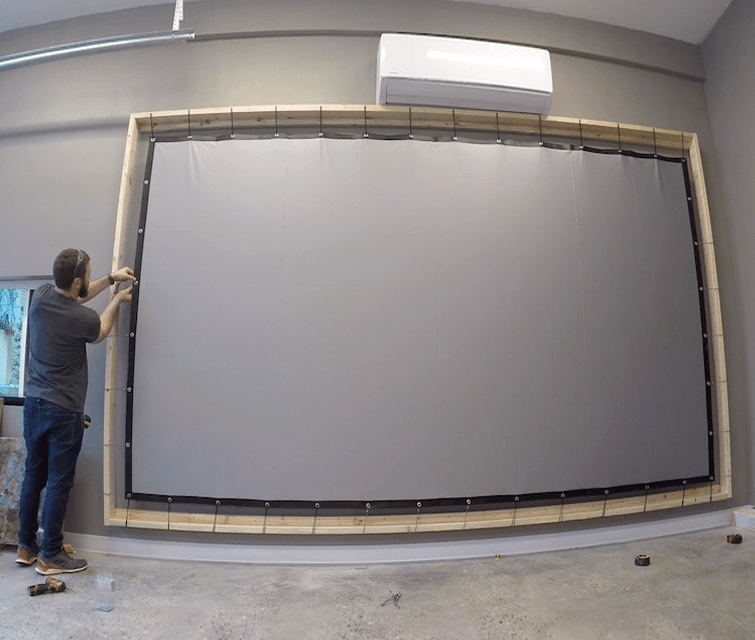Almost everything in life comes down to choice, and this is true for the entertainment center or home theatre in your home as well. You may have to decide between purchasing an OLED TV or a projector for your imaging and TV watching needs.
Comparing projectors vs OLED TVs then becomes necessary as you don’t want to regret your choice when it’s too late. If this comparison and deciding which pick is better has been eating at your mind, worry not. You can learn all the distinguishing features as well as the pros and cons of both projectors and OLED TVs below. After that, you likely won’t struggle as much with the decision of your purchase.
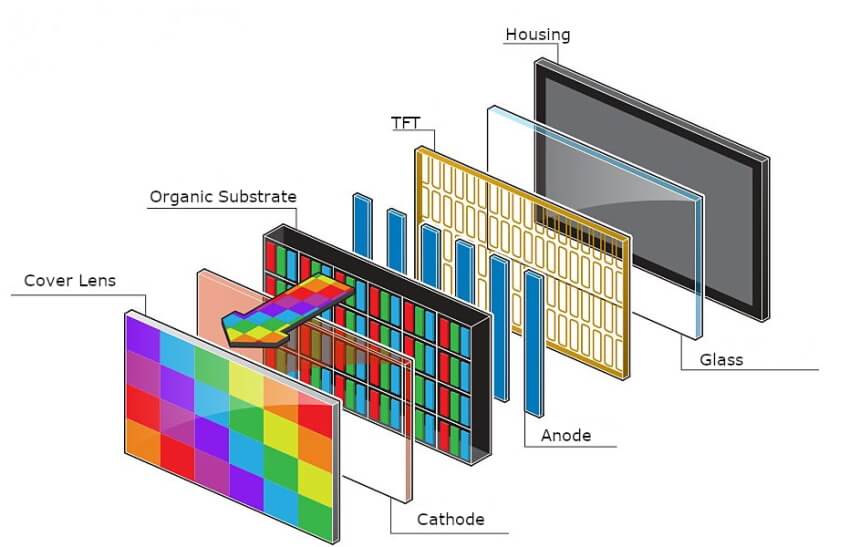
Notably, these thin films act as sources of color and light, and each will light up individually when electricity is passed through them. Conversely, they’ll shut down completely with no output in color or light when there’s no electricity running through them. In fact, if you were to display a blank screen, none of these thin films/pixels will turn on, and consequently, it will seem as though the whole screen is off.
Of course, this is starkly different from other imaging technology, where there is some light emission even in the display of a blank screen. This light washes out other colors to some extent and is why alternatives such as QLEDs, LCDs, and projectors have less contrast.
The color accuracy is also superior in OLED TVs. An extra feature of OLED TVs is their longevity. They’re made from more durable materials, and thanks to the organic construction of each organic thin film, they’re better for the environment as well.

Notably, projectors do heat up during use, and this is a prerequisite for them to project images onto a screen. This is also why the startup time for a projector is significantly more than that of most TVs. That said, they can just as easily overheat and damage the internal components and are therefore fitted with fans to keep this from happening. Projectors also often consume more power due to the fans and necessary working temperature.
Also, as we mentioned above, the contrast provided by regular and even 3D projectors isn’t the best in class, especially when there is ambient lighting. This necessitates that you cut off as much ambient lighting as possible before you project your images. Consequently, if you intend on introducing a projector at home, you either install it in the basement or get some blackout curtains.
Also notable is that due to all the light going through one spot as well as the heat during operation, the bulb in the projector tends to deteriorate over time and will eventually burn out. As such, even projectors in the $2000 budget range often need to have their bulbs replaced over time, which can be expensive.
Ultimately there are multiple other differences to highlight in the OLED TV vs projector debate, and we get into further details below.
First, the price is starkly different. Projectors come in a variety of prices, from affordable to expensive. As such, it’s just as easy to get a sub-$400 projector as it is to get one that costs $2000. That said, the more expensive the projector, the better the features. That’s why those with better image quality or high refresh rates like gaming projectors are more expensive.
Conversely, OLED TVs are pricey across the board, and it may be due to the superiority of the technology used in construction and the resulting benefits in image quality and color accuracy. The cheapest OLEDs cost over $1000. That said, you can easily find OLED TVs that cost over $3000 as well.
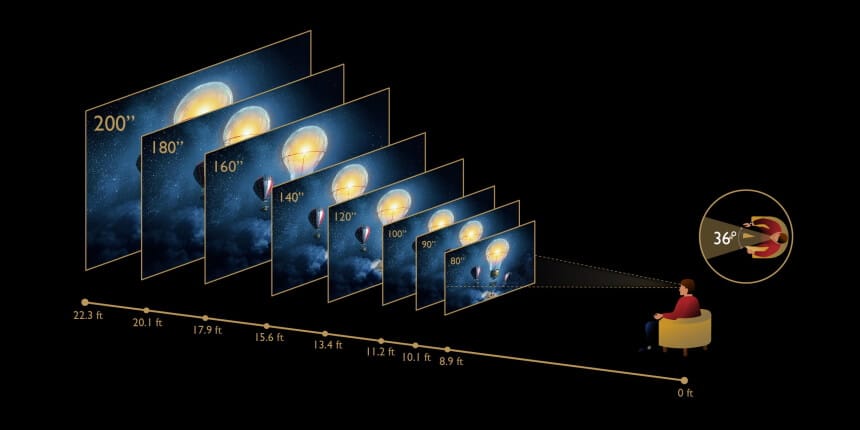
Notably, the screen size for the projector varies according to the distance between the screen and the projector. The further the projector is from the screen, the larger the projected image. Consequently, even if you want a 100” screen, it may not be feasible depending on the size of your theatre.
Also, the fact that an OLED TV screen takes up less space may be beneficial for some users. As such, you’ll have to decide on the screen size you want and confirm the feasibility of your choice in the home.
With regard to resolution, OLED TVs knock it out of the park compared to their projector counterparts. The resolution is the clarity with which you can see the text and images on the screen. Notably, contrast is a huge part of the resolution, as the clarity of the dark areas will be determined by how different they are from the light areas of the image.
As mentioned above, OLEDs can completely shut down some of the pixels if they’re not necessary for the image. This provides better darker shades as there’s no light coming through the screen. It also allows for better dynamic range. On the other hand, projectors project light even in dark areas, therefore, stunting the resolution. Other factors in the designs of the two machines affect the resolution as well.
Nevertheless, there are significant strides and improvements made over the years with regards to the resolution of projectors, and now you can find 4K options. That said, in terms of imaging, OLED TVs feature newer technology and better image processing, and you’ll even find 8K variations.
Also, in comparing a 4K projector with a 4K OLED TV, you find the imaging and resolution in the TV still looks better.
Whether you’re comparing a short-throw projector vs an OLED TV or a 4k laser projector vs an OLED TV, the brightness is bound to come into play. That said, the brightness for both is described using different parameters. OLED TV brightness is measured in nits, while projector brightness is measured in lumens. As such, there’s no way to compare them based on the ratings given.
However, you can compare the brightness of the images as you see them. A considerable part of projector use is darkening the room, which will typically increase the image’s brightness, making it easier to see. This is why you need blackout curtains or to install the projector in the basement.
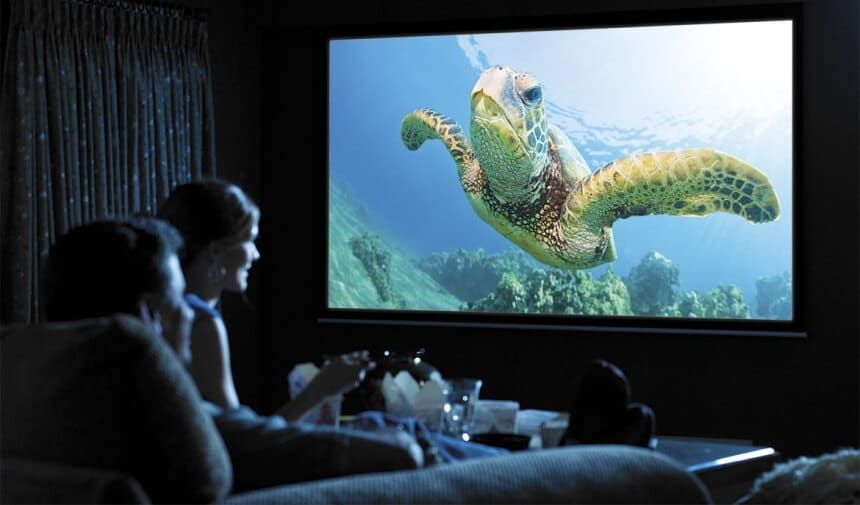
Nevertheless, if you compare such ultra-bright 4k laser projectors vs OLED TVs, the latter would still come out on top. Let’s not forget that projector bulbs dim over time, which may lead to further degradation in the brightness.
Comparatively speaking, TVs have always produced better colors, and this extends even past the OLED vs projector for home theater debate. They have better image processors for the same, and this will be evident as soon as you compare images from OLED devices vs those from projectors.
OLEDs also have a wider array of colors for displaying images, and hence the color accuracy will be top-notch. This is not to say that projector colors are bad. In fact, for most people, they’re pretty decent, and this will improve with higher resolution, more expensive devices, and the elimination of ambient light.
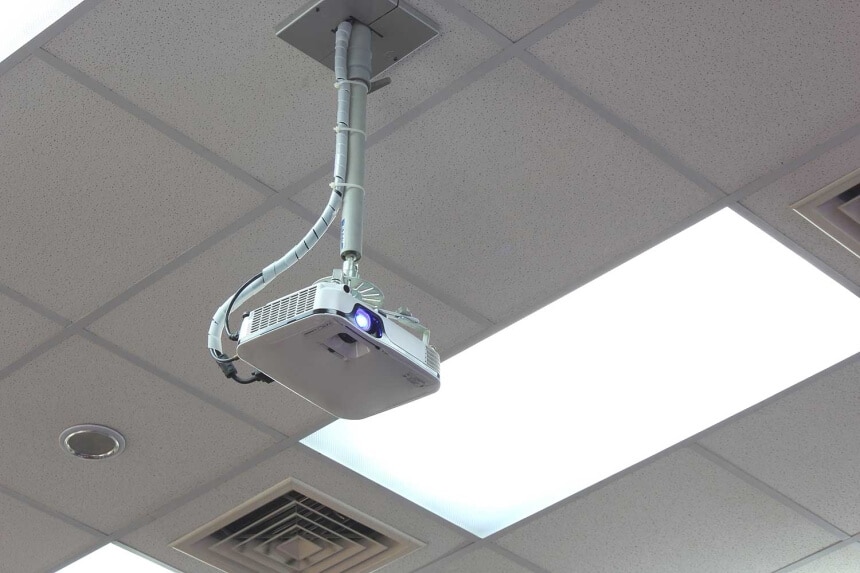
Second, you’ll need to consider the size of the screen you want relative to the size of the room. Remember, the further the projector is from the reflective surface, the bigger the image, and the closer the projector is, the smaller the image. Also, you have to avoid projecting the image on corners or in places where the viewing angle isn’t great.
Lastly, you’ll need to determine the positioning of the projector itself. You can put it on a coffee table or install it in the ceiling, which might help you avoid image interference from people or objects between the projector and screen. Also, remember you might have to switch to blackout curtains if necessary.
Seemingly, OLED TVs are better in almost any use scenario. But does that mean they’re the better pick? Not necessarily. Below, you see the benefits of projectors over OLED TVs and the benefits of OLED over projects, and in some cases, the projector is undoubtedly better.
The first benefit of projectors is that they cost significantly less than their OLED counterparts. The cheapest OLEDs cost upwards of $1000, and of course, with better resolution, bigger screens, and other extra benefits, the price only goes higher. On the other hand, some projectors cost even less than $100.
The image quality and resolution may not be the best, but they are still usable for watching movies and TV.
Let’s not forget that these parameters improve the more expensive the projector is. In fact, some projectors support 4K, Ultra High Definition, and 3D imaging at a lower price than their OLED counterparts.
In fact, users recommend the Epson Home Cinema 4010 4K projector for purchase for those who want excellent resolution in their projector. The color gamut is impressive for a projector, and the brightness is nothing to be scoffed at either. It also offers High Dynamic Range processing.
Another benefit of projectors is how easy they are to move. They’re compact, and you only need a blank white screen or wall in your destination to use the device. As such, it’s easier to pack these devices and take them with you on a trip. In comparison, even the smallest OLED TVs are bulky and will be problematic to move.
If we were to flip this OLED TV vs projector debate the other way and look at the benefits of the former, they are as follows. OLED offers better picture quality, brightness, and resolution across the board. If you want more vivid colors, better contrast, and better performance in brightly lit environments, you go for OLED TVs.
The power consumption is also lower. Another benefit is the extra features included with the TVs, such as smart capabilities. That said, modern projectors are now being fitted with intelligent capabilities as well. Lastly, there’s the easier installation that just needs you to plug in the device.
According to reviewers, the LG OLED C1 Series is one of the best OLED TVs in the market. LG is dominating the OLED market, and the C1 series is one of the reasons why. It’s available in multiple sizes, comes with the α9 GEN 4 AI PROCESSOR 4K for image processing, and even has a game optimizer for gamers.
Ultimately your pick in this projector vs OLED TV debate may come down to one simple factor: the budget. However, if money to spare isn’t an issue, you can afford a more in-depth comparison of the two options. Notably, preferences also play a significant role as some of you prefer the look and feel of projectors over OLED TVs while others like the superior imaging in the TVs. As such, it’s essential to think deeply about these two choices and the benefits of each before logging onto Amazon to purchase one.





